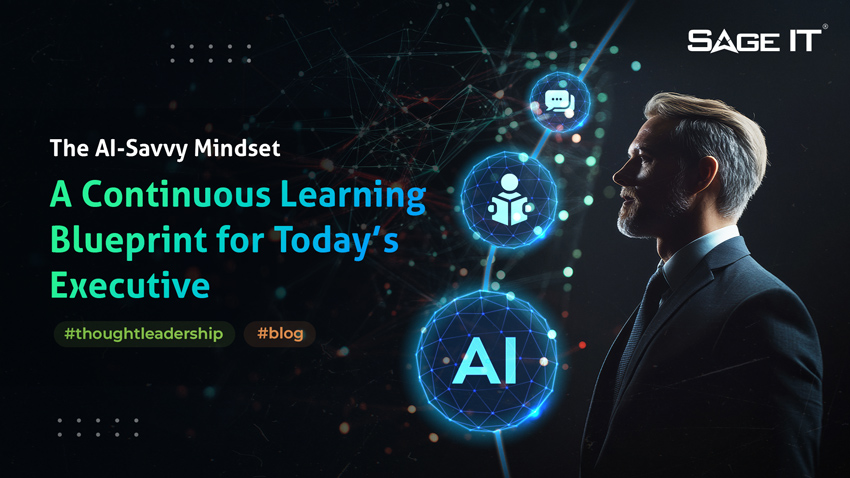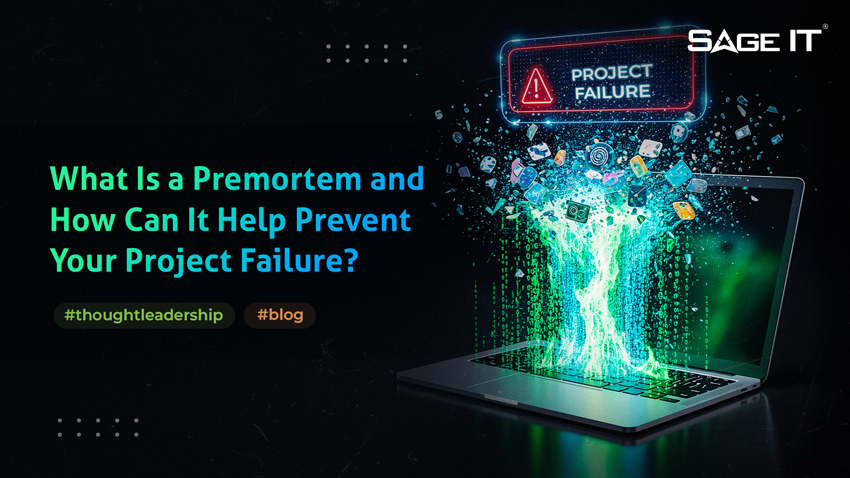The debate is over.
AI isn’t coming; it’s already here.
It’s transforming every industry, role, and decision at a pace no leadership playbook ever anticipated.
The question for today’s leaders isn’t whether AI will change your business.
It’s whether you’re changing fast enough to lead it.
Too many executives still treat AI as a technical problem, something to be “handled” by the CIO or CTO.
That mindset is no longer just a liability; it’s an existential leadership risk.
Because AI isn’t merely a technology shift.
It’s a foundational leadership shift, one that demands we evolve how we think, how we lead, and, most importantly, how we learn.
You don’t need to become a coder.
But you must be AI-fluent, skilled in how AI shapes strategy, influences culture, and strengthens the human element of competitive advantage – insights often gained through a comprehensive data science course.
And that fluency begins with mindset, one that blends strategic awareness with ethical foresight.
What It Means to Be an AI-Savvy Leader
As David De Cremer argues in The AI-Savvy Leader, AI competence isn’t about mastering algorithms; it’s about integrating AI responsibly into the heart of business strategy.
At its best, an AI-savvy leader:
In a world where AI evolves by the day, the best leaders don’t chase perfection; they pursue fluency and velocity.
The problem? Most executive learning systems were never designed for that kind of velocity.
Why Executive Learning Must Change
Frankly, most executive development programs are obsolete for this moment. They teach communication, finance, and planning, but not AI fluency.
They prepare leaders for stability in systems that now demand decisive agility.
Traditional leadership rewarded:
- Deep expertise in one domain
- Predictable planning cycles
- Linear, incremental change
AI leadership rewards:
- Cross-disciplinary awareness
- Scenario-based thinking in uncertainty
- Exponential, nonlinear adaptability
This new era doesn’t just require new tools.
It demands a new mental operating system, one that is wired for curiosity, systems thinking, and ethical governance.
To make that mindset practical, we’ve built what we call The Executive Learning OS, a blueprint that turns intention into capability.
The Executive Learning OS: Six Traits of the AI-Savvy Mindset
Here’s the blueprint we use internally to help executives develop AI-savvy thinking, a system designed for leadership in the intelligent age.
1. Curiosity Over Certainty
AI disrupts established norms. The worst response is rigid expertise; the only sustainable one is relentless, structured curiosity.
Instead of saying, “This will never work in our industry,” ask:
“What would it take for this to work in our context?”
Curious leaders don’t just adapt to change; they create it.
2. Systems Thinking
AI decisions ripple through entire ecosystems, influencing customers, regulators, partners, and employees alike.
AI-savvy leaders think in networks, not silos. They ask:
“If we optimize X, what might we unintentionally break in Y?”
They see the organization as a living system, not a static chart.
3. Human-Centric Design (The Ethos of AI)
AI is powerful, but it is not inherently empathetic. Leaders must be.
AI-savvy executives ensure technology serves humanity, not just metrics. They design systems that:
- Respect autonomy and dignity
- Include diverse perspectives
- Prioritize outcomes for people, not just performance
They don’t just ask, Can we build this?
They lead with: Should we build this, and for whom?
4. Ambiguity Navigation
AI systems learn, evolve, and adapt, which means ambiguity is permanent.
AI-savvy leaders thrive amid incomplete data, probabilistic outcomes, and shifting rules.
They don’t freeze in uncertainty; they move forward with informed confidence.
5. Ethical Anchoring (The Accountability Imperative)
When AI influences hiring, lending, healthcare, or justice, ethics cannot be an afterthought; they are the foundation.
AI-savvy leaders:
- Establish clear values and red lines
- Build transparent governance frameworks
- Encourage ethical dissent and oversight
They don’t wait for regulation to dictate the right path; instead, they lead with principles.
6. Continuous Unlearning and Relearning
Yesterday’s best practices may block tomorrow’s breakthroughs.
AI-savvy leaders:
- Read widely, exploring technology, philosophy, and design.
- Experiment boldly with new tools
- Surround themselves with challengers, not cheerleaders
They treat learning velocity as a competitive advantage.
Together, these traits form a dynamic learning cycle, one that enables leaders not only to keep pace with AI but also to shape its trajectory.
Building the AI-Savvy Learning Stack
Mindset is the start. Systems make it scale.
Here’s the structure we use to turn leadership curiosity into lasting capability.
| Layer | Focus Area | Examples |
| Foundation | Concepts and terminology | AI literacy workshops, GenAI fundamentals |
| Application | Tools and use cases | GPT, Copilot, Midjourney in daily workflows |
| Strategy | Organizational impact | AI strategy labs, scenario planning |
| Governance | Risk and responsibility | Ethics panels, regulatory briefings |
| Culture | Behaviors and mindset | Change-readiness sessions, empathy in tech |
This stack doesn’t just create knowledge; it builds adaptability.
Adaptability is the true leadership currency in an age of algorithms.
But systems alone don’t transform organizations; leaders do.
Which is why every AI transformation begins where all culture change begins: at the top.
From Learner to Model: Why It Starts with You
If you sit in the C-suite, your teams are watching your every reaction to AI.
Your behavior sets your organization’s risk tolerance, learning curve, and cultural momentum.
Ask yourself:
- Have I used a generative AI tool this week?
- Do I understand how AI affects my function’s KPIs?
- Can I explain our AI strategy in plain language?
- Am I creating a safe space for experimentation, and for failure?
Because here’s the truth:
You cannot delegate understanding.
AI fluency starts at the top, and it scales only when leaders model it daily.
And that’s why the future belongs to those who do more than manage AI; they lead with it.
The Future Belongs to the AI-Savvy
AI will not replace leaders.
But leaders fluent in AI will replace those who aren’t.
The future will be won by those who blend:
HUMANITY. AWARENESS. COURAGE. CLARITY. VELOCITY.
That is the AI-savvy mindset.
And it’s yours to build, starting today.
But remember, mastery isn’t a destination. It’s a discipline.
Which brings us to the final truth of AI-era leadership: Leading is learning.
Leading Is Learning
AI changes fast. The only sustainable response is to learn faster, better, and with greater intention.
- Not just for survival, but for significance.
- Not just for innovation, but for inclusion.
- Not just for margins, but for meaning.
Because in the age of intelligent systems, the most intelligent act a leader can take is to stay deeply, relentlessly human.











